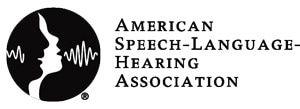WHAT WE DO
|
Speech and language screenings are utilized to identify potential problems at the broad level.
It is important that all prospective clients have a current and valid hearing screening prior to receiving an evaluation.
We offer
COMPLIMENTARY phone consultations for all first time clients! |
Speech and language evaluations provide an appraisal of communication skills including comprehension and expression of language, non-verbal communication, sound production and articulation. A combination of formal and informal measures such as parent interview, play-based interactions, and observations are used to determine areas of strengths and weaknesses.
|
Therapy sessions are aimed at improving a child's communication skills through both verbal and non-verbal methods. Skills are enhanced through fun activities which promotes the child as an active communicator. Therapy sessions are provided through face-to-face sessions or through TELE-INTERVENTION.
|
|
Most private schools do not have a Speech-Language Pathologist on staff. In coordination with the private school, services (e.g., screenings, assessments, treatments) may be provided at the child's school.
|
Accent Modification - choose to receive this service include: Non-native English speakers, speakers who want to reduce regional accents, and business and medical professionals who want to improve their communication skills due to foreign or regional accents.
|
Tutoring is successful because it provides individualized, one-on-one instruction. Our tutor is a credential and Master degree holder who has many years experience teaching general and special education classrooms. STP offer academic tutoring to students needing educational support. Tutoring services are provided for students ranging from elementary all the way through high school aged.
|

